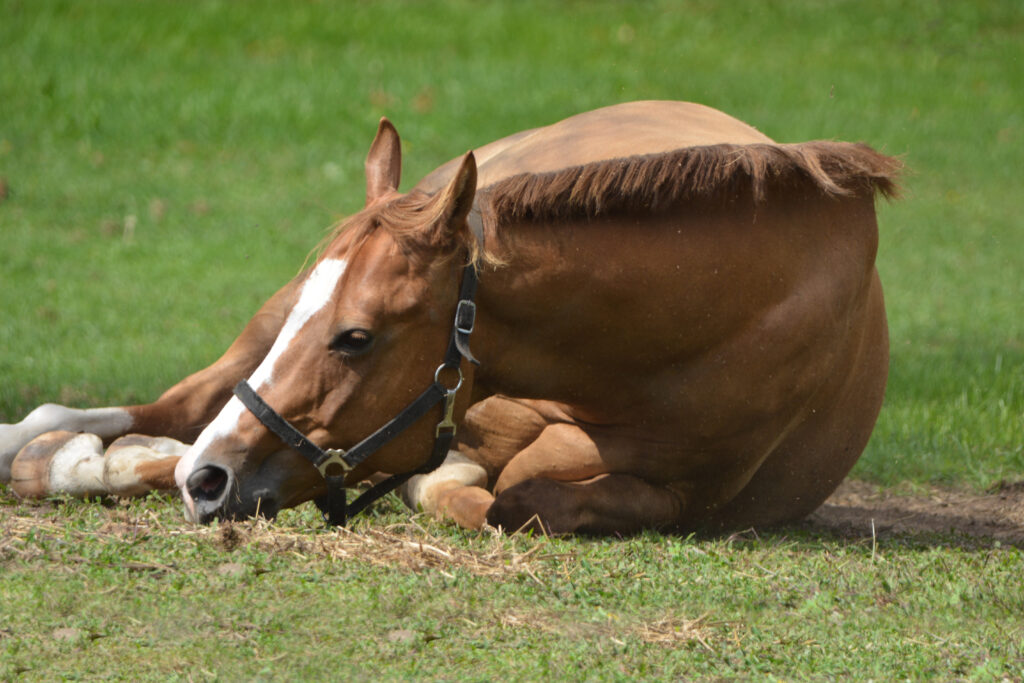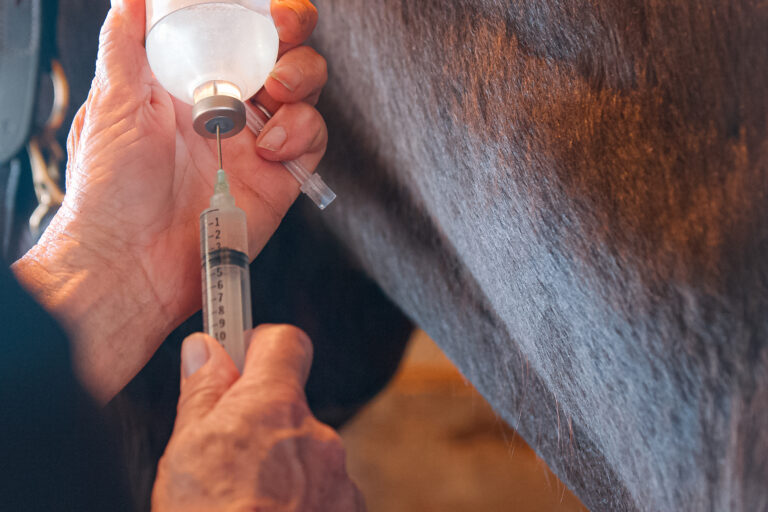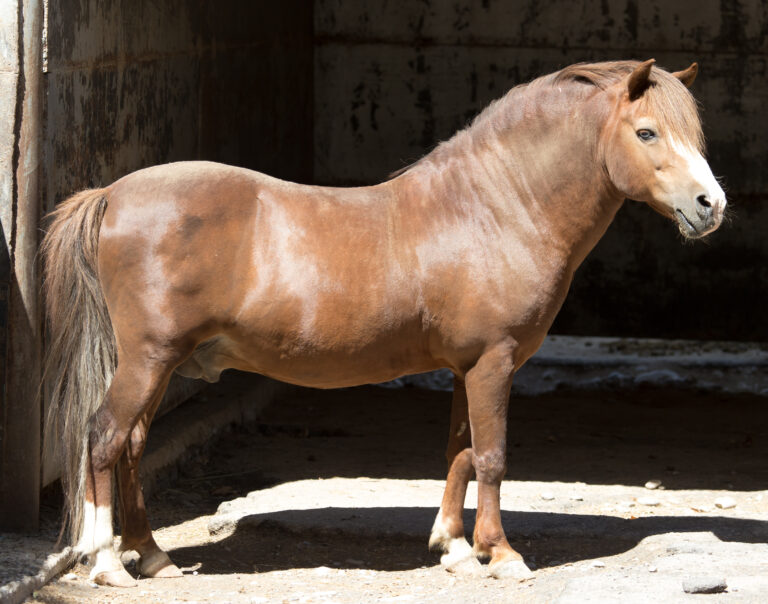
The use of non-steroidal anti-inflammatory drugs (NSAIDs) has been associated with development of right dorsal colitis (RDC) in horses. Prolonged administration and/or excess dosages can precipitate RDC, possibly due to disruption of the microvascular endothelium and mucosal barrier function in the right dorsal colon. Phenylbutazone further reduces bicarbonate secretion and inhibits normal buffering function. NSAIDs also appear to have a cytotoxic effect on colonic epithelial cells. Marked edema, wall thickening, and ulcerations in the mucosa are hallmarks of RDC.
Study on Right Dorsal Colitis and NSAID Use in Horses
Besides clinical manifestations of significant protein loss through the gut and ulcerative pain, RDC has a high incidence of mortality. In a recent study out of Australia, a research team examined the relationship of NSAIDs to RDC and reviewed clinical pathology, ultrasound findings, treatments, and outcomes, as well as factors associated with survival.
The researchers acquired medical records of horses with a definitive diagnosis of RDC from 2007-2021 from seven private and university equine hospitals in Australia. Veterinarians confirmed RDC with biopsy or direct examination by necropsy, laparoscopy, or celiotomy. The study also included 35 cases considered presumptive for RDC if there was a history of NSAID use, RDC was diagnosed by an internal medicine specialist, and at least three of the following criteria were met: hypoproteinemia or hypoalbuminemia; loose feces or diarrhea not related to infectious disease; colic not caused by sand or gastric ulceration; and thickening of the colon wall more than 3 mm for ponies and 4 mm for horses.
Affected Horses
Affected horses encompassed a variety of breeds with a median age of 6 years at diagnosis. Sixty-nine percent of horses in the study were geldings, 17% were mares, and 14% were stallions. All but one horse had received at least one dose of NSAID within 30 days prior to admission. The most common use of NSAIDs (29%) was for non-laminitis-related orthopedic disease. Laminitis pain accounted for 21% of use, ophthalmic disease 17%, colic or gastrointestinal disease 17%, fever 6%, castration 6%, and respiratory disease 3%. Three-quarters of the horses received phenylbutazone for at least eight consecutive days, 15% received flunixin, and 9% received a combination of the two drugs.
Notably, for cases in which the dosage given was known, 84% of the horses had been administered too high a dose either within a 24-hour period and/or over the course of four or eight days. Most horses presented with diarrhea (69%), colic (61%), tachycardia (53%), and fever (33%). Hematology and biochemistry evidenced a variety of abnormalities: low albumin from intestinal loss, high lactate, and increased serum amyloid A (SAA). Only half the horses had low protein. In 77% (20/31) that underwent abdominal ultrasound, the right dorsal colonic wall was thickened. It is notable that diagnostic ultrasound lacks sensitivity because it cannot appropriately visualize the mesenteric surface of the colon.
Medical Treatment for Right Dorsal Colitis
Medical treatment included intravenous fluid therapy in 59%; misoprostol in 51.6% to increase mucus and bicarbonate secretion and mucosal blood flow; omeprazole in 47%; sucralfate in 38%; antimicrobials in 37.5%; corn oil as a source of linoleic acid to increase gastric prostaglandin E2 and psyllium to increase short-chain fatty acids in 15.6%; and hyperimmune plasma in 13%. A low-fiber diet was also implemented in 39%. Exploratory surgery was performed on 20% (7/35), with two of the seven needing partial colon resection. Three that underwent surgery died.
Prognosis for Right Dorsal Colitis in Horses
Of the 35 horses in this study, 20 (57%) survived to discharge, leaving a 43% overall fatality rate. Of the deceased horses, eight had a necropsy, which revealed severe and extensive ulceration in the right dorsal colon. One horse also had renal papillary necrosis, also linked to NSAIDs, especially in dehydrated horses. Survival odds decreased with the following:
- Increasing heart rate.
- Increasing packed cell volume.
- Abnormal mucous membranes on presentation.
Risk Factors for Right Dorsal Colitis in Horses
Across other studies, 95% of RDC cases are less than 15 years of age; in this study, 82% were under 15 years. Young horses might be more likely to develop this syndrome due to performance-related lameness or injuries leading to NSAID treatment. Stacking—concurrent administration of more than one NSAID—can predispose horses to RDC, especially if both medications are given at the recommended dose; three of the 35 horses received more than one NSAID concurrently. However, it is important to note that 16% (4/25) of horses given known dosages still developed RDC despite receiving the recommended amounts.
Final Thoughts
Early detection and aggressive treatment are key to optimizing survival from RDC. Veterinarians should consider measuring serum albumin concentrations and carefully monitoring horses receiving a prolonged course of NSAIDs. Horse owners must also be made aware of the risks associated with NSAID use, particularly at incorrect dosages and/or duration of treatment.
Reference
Flood, J.; Byrne, D.; Bauquier, J. et al. Right dorsal colitis in horses: A multicenter retrospective study of 35 cases. Journal of Veterinary Internal Medicine Sept 2023; DOI: 10.111/jvim.16884


![[Aggregator] Downloaded image for imported item #18375](https://s3.amazonaws.com/wp-s3-equimanagement.com/wp-content/uploads/2025/09/30140031/EDCC-Unbranded-26-scaled-1-768x512.jpeg)

